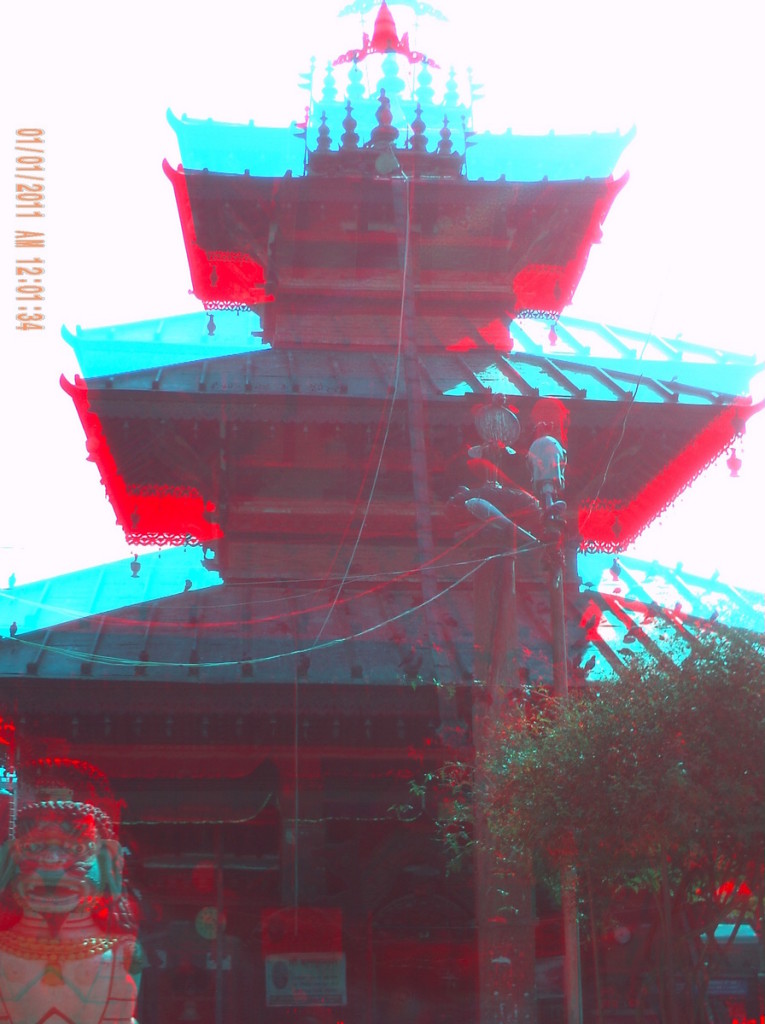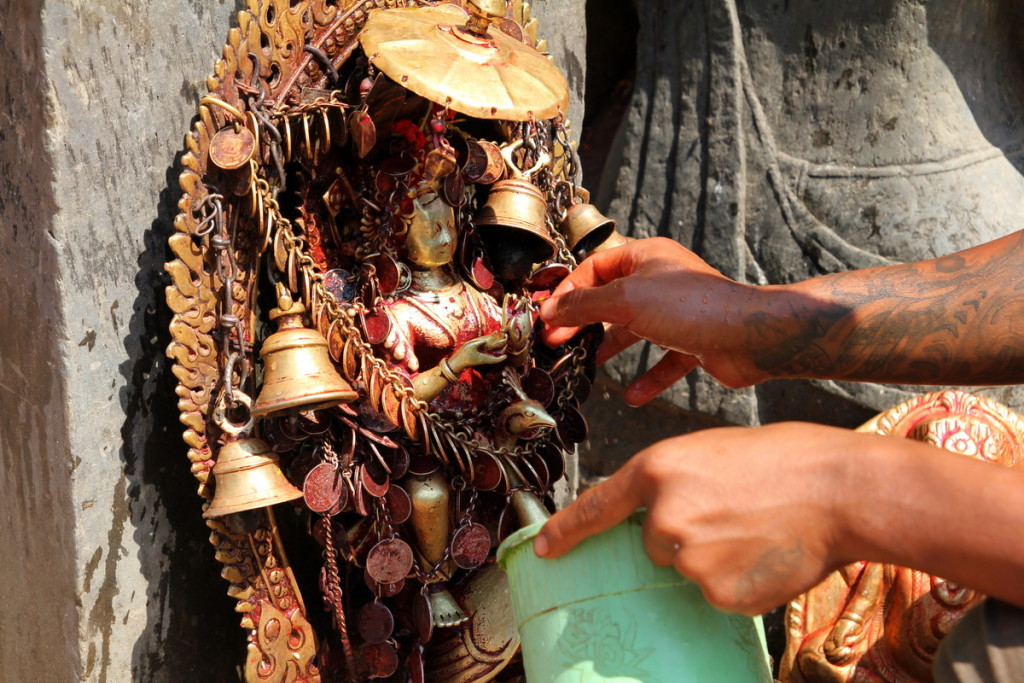Preserving buildings, shrines and temples of the past
We use a variety of techniques, methods and technologies to document and preserve Nepal’s current cultural heritage buildings. We address all aspects of 3D-capture, 3D-processing, Photogrammetry, digital archiving, semantics of shape, texture, materials and color along with other sources from text (and other media). One such methods is sending the Institute of Digital Archaeology 3D photographs back to Oxford for processing and archiving in the one million image database.

3D photograph of the Balkumari Temple in Nepal (you’ll need a pair of 3D glasses to view this image properly)
Ancient artifacts brought out to light and preserved
As part of our own preservation techniques we double up on many sites to archive as much as possible. In the case of the Balkumari temple we were made a replica of the temple but were also able to digitally preserve a 3D copy of the Balkumari shrine itself using our own equipment.
Discovering a hidden history
We also try to conduct full historical and text surveys from areas we digitally archive. In this case the interior of a temple revealed further undocumented discoveries we will publish once the research and modeling is complete.
This is an additional process we had not originally anticipated nor expected to record. However such historical data cannot and should not be lost. We are developing a capacity within our digital archive to record this information.
Tourist memorabilia
One of overlooked areas of digital archaeology is that of the tourists that have been before. When the temples and buildings were relatively undamaged. As part of our archiving project we are teaming with Microsoft to help recover some of this imagery.
360 degree panorama photographs from heritage sites are a huge digital asset. If anyone comes across any panoramic photographs of heritage sites in Nepal please get in touch with us. We are also archiving and producing several lower quality interactive walk-through models to give people a more natural and informed look at what heritage sites in Nepal look like.

